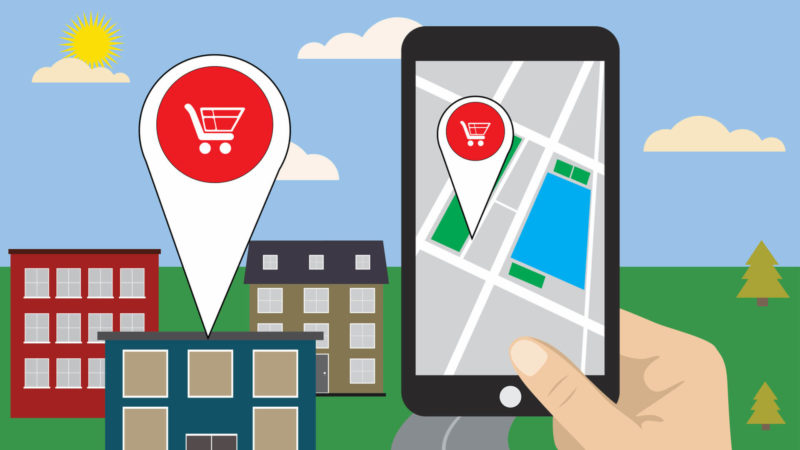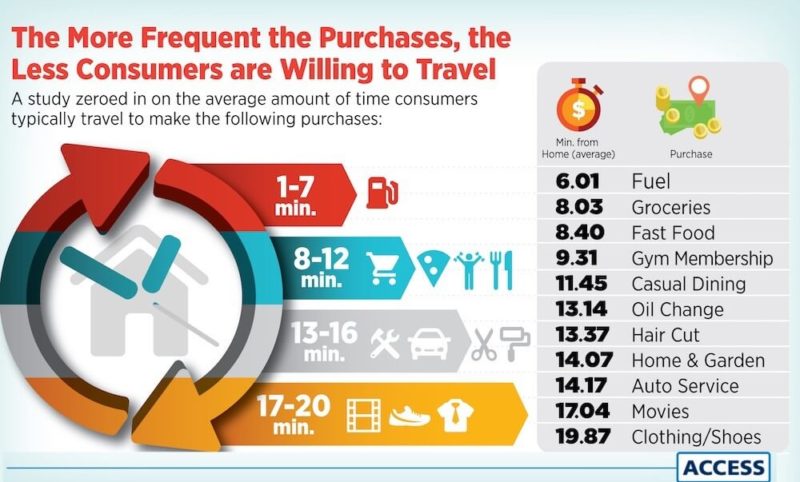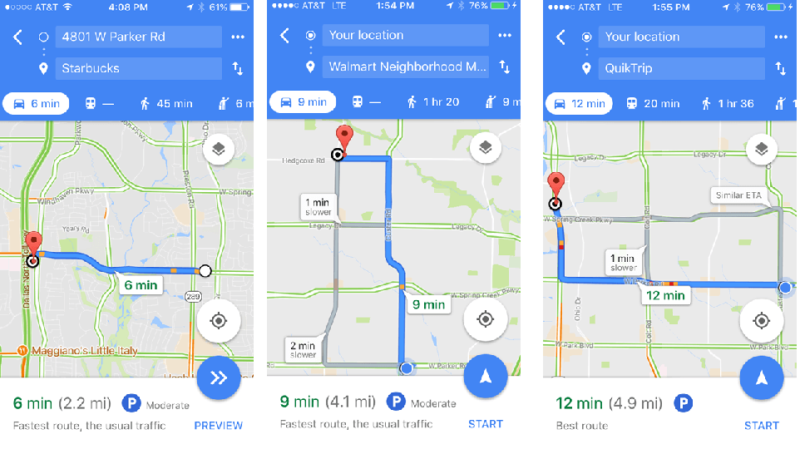
While much deserved attention is given to local SEO and SEM, showing up in search results is only half the job.
Google performed a study that demonstrated very little correlation between usage or traffic and influence. In other words, just because people frequently find your business doesn’t mean they choose your business or buy from your business. Rather, influence is achieved through consumer experience and matching your content to what consumers need or are looking for.
Conversion takes more than attracting attention — it requires engagement or connection with the consumer and matching what you are offering with what the consumer is looking for. More often than not, consumers look for location information when considering local stores to purchase from.
Local search conversion starts with location
In a study by MomentFeed, national brands report that 85 percent of all engagement with their businesses takes place on local media assets such as local landing pages. Local business characteristics drive conversion, whether for large brands or small businesses.
Arguably, the biggest local factor for consumer decisions when shopping at stores is location. In a national consumer study (registration required) on how far consumers would travel to shop, Access found that 93.2 percent of consumers typically travel 20 minutes or less when shopping for everyday purchases. Urban consumers (83 percent of all shoppers) prefer even shorter distances, with 92 percent usually traveling 15 minutes or less.
Distance was a far greater influence than price or quality of product. When asked what influences purchases, excluding travel distance, only 32 percent responded that best price most influenced their decision. Thirty-two percent likewise stated quality was the most influential.
Consumers also shortened the distance they are willing to travel for the most frequently purchased items, averaging only six minutes away from home for gas stations. Groceries and fast food may be slightly farther, averaging between eight and nine minutes, while home and garden and auto service average about 14 minutes away from home. Consumers tolerate the greatest distance for purchases of clothing and shoes, averaging almost 20 minutes from home.

Consumer Travel Distance for Local Purchases (Source: Access)
Converting time consumers are willing to travel into miles is a little more difficult. There are a lot of variables such as traffic, mode of travel and roadway speeds. For example, highway access would extend the distance someone would be willing to travel, while someone in an urban neighborhood might use walking time as their standard.
Nevertheless, below are some measurements of distance based on time of travel by car per Google Maps. The travel is via direct routes on major roads (not highways) during a time of day with little traffic:
- 6 minutes = 2.2 miles
- 8 minutes = 3.2 miles
- 9 minutes = 4.1 miles
- 12 minutes = 4.9 miles
- 17 minutes = 6.6 miles
- 20 minutes = 9.3 miles

Time to Distance Conversion (Google Maps)
The results from Access provide greater insight into consumer tolerance for distance than the oft-cited (but of unknown origin) statistic that 80 percent of consumer spending is made within 20 miles of home. And it shows that consumers often want stores closer than even Google’s study found, wherein 72 percent of consumers searching locally visited a store within 5 miles.
Thus, we can estimate that consumers search for local businesses such as groceries, coffee shops, convenience stores, pharmacies, dry cleaners, gyms, household goods, mail/shipping services and gas stations that are within two to four miles of their location.
Given the importance of location to converting local search results into purchases, below are six tips for using location information to boost your local search marketing. If you’re interested in how to use location data for targeting, check out this previous article. The following tips focus on communicating location information that consumers seek when deciding where to shop.
1. Make location information easy to find
It’s easy to overlook the importance of making location information prominent on web pages or landing pages when designing creatives and content about your product or service. Especially with the current trend of large singular hero graphics and the need to accommodate mobile screen size, choices are frequently made on what content to keep and what to cut on the front page or above the fold.
Location is too critical an influence on consumer choice to sacrifice in those choices. Addresses, maps and cross streets that communicate your store location should be highly visible. If not on page one, conspicuous labels linking to location information need to be easy to find.
2. Use local landing pages for businesses with multiple locations
For multilocation businesses, it’s typical to have a dedicated page listing different locations with addresses, contact information and hours of each. However, with 85 percent of engagement occurring on local media assets, each location should have its own landing page, too.
Each location should have its own GMB (Google My Business) profile, Facebook page, website or landing page, Yelp listing and page/listing/profile on any other media platform on which the business relies. This will allow each to highlight maps, addresses, neighborhood and other location information relevant to itself.
3. Describe location in ways different audiences understand
While addresses are important, they may not communicate sufficient information for a user to quickly evaluate proximity. For example, even though I travel Preston Road frequently, an address of 1428 Preston Road doesn’t mean much to me. Preston Road is 30 miles long and traverses through Dallas, Texas, and the suburbs of Plano, Frisco and Prosper.
[Read the full article on Search Engine Land.]
Some opinions expressed in this article may be those of a guest author and not necessarily Marketing Land. Staff authors are listed here.
About The Author

Popular Stories
Related Topics
